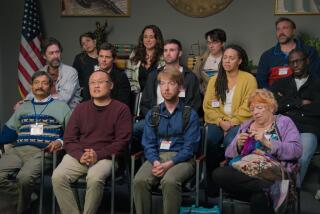ANALYSIS : Excess of Experts Intrudes on Intended Role of Jury : Rape trial: High-priced witnesses are impressive but irrelevant. Panels are supposed to render common-sense decisions.
- Share via
The William Kennedy Smith rape trial, as it has unfolded over the last several days, has provided a textbook example of one of the most troubling developments in American courtrooms--the steady erosion of the jury’s function by legions of experts whose expertise is impressive but irrelevant to their testimony.
If the defense presentation comes to a quicker-than-expected conclusion by putting Smith on the witness stand as early as today, the bulk of the defense case will have been brought through the use of expert testimony. And that will, once again, underscore how unusual a criminal case this has been.
Testimony from experts has become a fixture of civil lawsuits but until recently it has played a relatively restricted role in criminal trials, in part, because few defendants can afford it and, in part, because in most criminal cases there is very little for an expert to testify about.
One might have expected the same thing to be true here. The case on one level is fairly straightforward. Either Smith is telling the truth about what happened at the Kennedy compound late on Good Friday night, or his accuser is. And the experts have had little to say that actually introduced new facts to help resolve that question.
Instead, Smith’s lawyers have used experts to present conclusions to jurors about how they ought to interpret the facts that have been placed before them.
Standard defense strategy would have called for putting the defendant on the stand first, confronting the jury immediately with the defense side of the story. But under the strategy developed by Smith’s attorney, Roy E. Black, experts appear to be the key to the case. In essence, Black will be asking the jurors to use the experts as a tie breaker to resolve the question of which side to believe or as insurance to bolster the case if Smith makes a less convincing witness than his accuser.
And that strategy raises many questions about the proper use of experts. As the jury system evolved in Britain and the United States, the whole point of gathering a group of ordinary people to judge guilt or innocence has been that jurors would apply the common sense of the community to the facts presented by both sides. For that reason, witnesses are supposed to be strictly limited to stating facts and leaving opinions or conclusions to the jury.
An eyewitness, for example, can testify that he saw a driver go through a red light but not that he believes the driver was acting negligently. The first is a statement of fact, the second is a conclusion which, under the rules of evidence, only the jury is allowed to draw.
As science and technology have become more and more a part of everyday life, however, an exception has been carved out of that rule. The exception gives experts leeway to state opinions and conclusions within what courts consider “the area of their expertise.”
Increasingly, that once-narrow exception has widened and experts have been given more and more leeway to state conclusions about matters that are not truly questions subject to expert analysis. Particularly in civil lawsuits, the result has been to turn a growing number of trials into battles between opposing experts, greatly raising the cost of litigation and often leaving jurors bewildered.
In this case, Smith’s defense has been able to introduce an entire battery of experts to offer opinions on subjects that require no real expertise at all, subjects such as whether a person who was thrown to the grass would get stains on her clothing or whether a man with only a partial erection would be able to complete a sex act with an unwilling partner.
Witnesses have been asked to offer opinions not on the sort of questions for which experts were traditionally called--highly complex technical matters that were deemed to be outside the realm of what ordinary jurors could figure out for themselves--but, instead, on a whole range of matters in which their testimony has been little more than speculation, such as the numerous ways that sand could get into the clothing of someone who had been on a beach.
The strategy Smith’s lawyers have employed is what lawyers would term a “scattershot” defense, an attempt to throw enough material at the jury to raise a reasonable doubt in at least one juror’s mind. And the experts have been a key part of it.
Reliance on experts can be countered. But the prosecutors in this case have acted little to do so. Indeed, at times, the prosecutors appear to have played into the defense strategy.
The prosecution could have highlighted to the jury how little the experts actually had to say about the facts of the case by dismissing them with a few brief questions. Instead, by engaging in extensive cross-examination, they may well have heightened the experts’ importance in the eyes of the jury.
One danger of the experts is that jurors can, at times, grow annoyed if they feel they are being patronized by a defense that puts on experts to tell them what is merely common knowledge. Prosecutors could play on that feeling by suggesting that the defense is using slick tactics to confuse simple questions. So far as can be seen, however, the defense appears to be avoiding that danger. Judging by their attentive posture during the last several days’ testimony, jurors appear to have been captivated by the experts.
More to Read
Sign up for Essential California
The most important California stories and recommendations in your inbox every morning.
You may occasionally receive promotional content from the Los Angeles Times.










